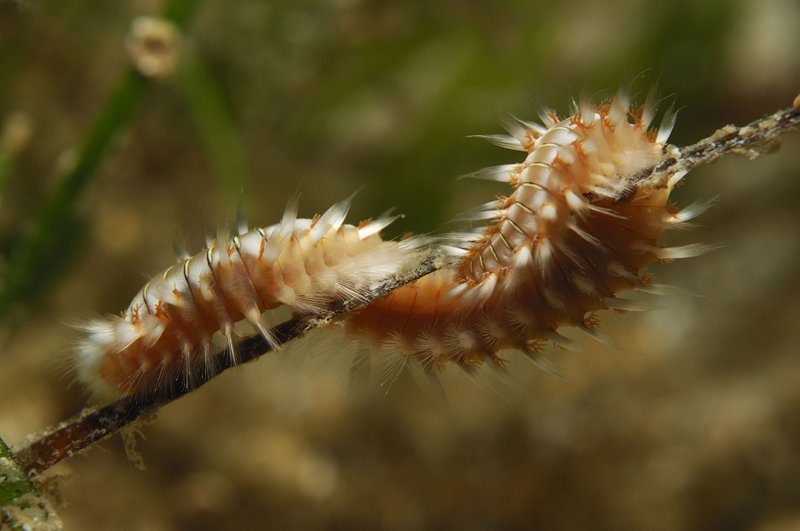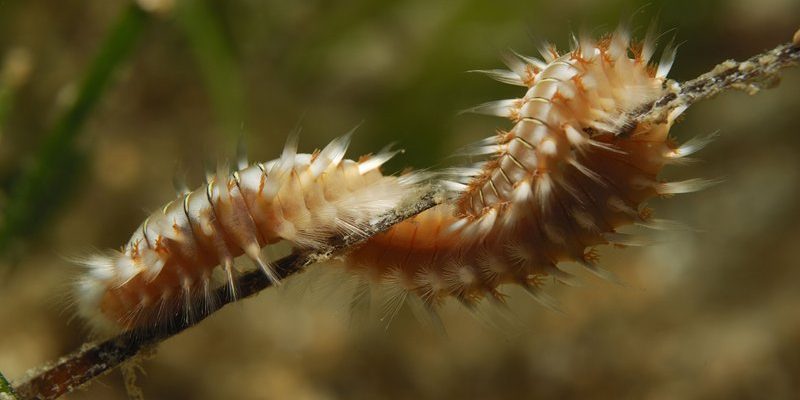
Understanding Bristle Worms: A Quick Overview
Bristle worms are a type of segmented worm that primarily live in marine environments. They’re often found in various habitats, from coral reefs to sandy ocean floors. Think of them as nature’s little recyclers—feeding on dead organic matter and contributing to nutrient cycling. Their bodies are covered with tiny bristles called chaetae, which can help in locomotion and sometimes defense.
You might wonder why bristle worms are a hot topic for marine enthusiasts. Well, they play a vital role in the underwater ecosystem by aerating the sediment and serving as food for various fish and other sea creatures. Understanding their spawning habits is essential for maintaining balanced marine life, particularly in reef systems where they often thrive.
When bristle worms are ready to spawn, they undergo significant changes, both physically and behaviorally. This is an exciting time in their life cycle, and observing the process can be mesmerizing, almost like watching a fireworks display underwater.
How Often Do Bristle Worms Spawn?
So, how often do bristle worms actually spawn? Generally, bristle worms can reproduce several times a year, but it often depends on environmental conditions. Factors like temperature, food availability, and even lunar phases can influence their spawning cycles. This is similar to how certain flowers bloom in response to seasons or how some animals mate during specific times of the year.
Typically, bristle worm spawning occurs during warmer months when conditions are just right. In tropical waters, you might notice them spawning more frequently compared to cooler regions. This seasonal pattern ensures that the larvae have a higher chance of survival when conditions are optimal for growth.
Bristle worms are known to spawn in large groups, releasing gametes into the water column. This synchronized event increases the likelihood of fertilization—kind of like when flowers bloom at the same time to attract pollinators.
What to Expect During Spawning
When bristle worms are ready to spawn, you’ll notice some fascinating changes. First, many species undergo a process called *epitoky*, where they develop a specific reproductive form. This transformation often involves the enlargement of body segments and the production of gametes.
During spawning, a bristle worm may appear more colorful and vibrant, drawing attention to itself. When they release their eggs and sperm into the water, it’s like a confetti explosion of tiny particles floating away. This can create quite a spectacle if you’re lucky enough to witness it in person!
You might be wondering what happens next. Once the eggs are fertilized, they develop into larvae, which then drift in the ocean currents. This stage can last several weeks, allowing the future bristle worms to find suitable habitats as they grow.
Environmental Factors Influencing Spawning
As we touched on earlier, several environmental factors can influence bristle worm spawning. Temperature is one of the most significant factors. Warmer waters tend to promote more frequent spawning because they help in the development of eggs and larvae.
Another key factor is the availability of food. Bristle worms thrive in nutrient-rich areas, so if the ocean is abundant in organic matter, they’re more likely to spawn. Think of it like hosting a party—you need enough food and a good atmosphere to make it happen!
Lunar phases also play a role in their spawning cycles. Many marine organisms, including bristle worms, have biological rhythms that align with the moon’s cycle. This means that the timing of spawning can often coincide with specific phases of the moon, like full or new moons. It’s nature’s way of ensuring a successful reproductive event!
The Life Cycle of Bristle Worms
The life cycle of bristle worms is quite interesting, involving several distinct stages. After fertilization occurs, the eggs develop into larvae known as *trochophore* larvae. These tiny creatures are planktonic, meaning they drift along with ocean currents. This helps distribute the next generation over a larger area.
As these larvae grow, they eventually settle down and undergo metamorphosis, transforming into juvenile bristle worms. At this stage, they start to develop their characteristic bristles and segmented bodies. It’s like watching a superhero origin story unfold, as they gain new abilities for survival.
Once fully matured, bristle worms can live for several years, depending on the species and environmental conditions. They continue their roles within the ecosystem, contributing to the overall health of marine environments. Knowing how they develop helps us understand the importance of protecting their habitats.
Why Does Bristle Worm Spawning Matter?
Understanding bristle worm spawning isn’t just interesting for marine enthusiasts; it’s crucial for marine conservation. Bristle worms are key players in their ecosystems, as they break down organic materials and promote nutrient cycling. When they spawn successfully, it helps maintain fish populations that rely on them as food.
In coral reef ecosystems, a healthy population of bristle worms can indicate good water quality and overall ecosystem health. However, if factors like pollution or habitat destruction impact their spawning success, it can have ripple effects throughout the food chain. Protecting their habitats is essential for the stability of marine life.
Moreover, spawning events can even help scientists study marine biodiversity and track changes in ocean health. By observing how and when these organisms reproduce, researchers can gain insights into broader environmental shifts, which is vital for conservation efforts.
How to Observe and Appreciate Bristle Worm Spawning
If you’re interested in witnessing bristle worm spawning, there are a few things to keep in mind. First, timing is key. Research local species and their spawning patterns to know when to look for them. Remember, warm months and specific lunar phases can increase your chances!
Diving or snorkeling in areas where bristle worms are known to thrive can also enhance your likelihood of seeing this event. Bring along a camera; capturing these moments can be rewarding. Just remember to maintain a respectful distance—after all, we’re guests in their underwater world.
Additionally, participating in marine conservation efforts can deepen your appreciation for these creatures. By helping to protect their habitats, you contribute to the overall health and stability of the marine ecosystem, ensuring that future generations can enjoy the splendor of bristle worm spawning.
In conclusion, bristle worm spawning is a fascinating and important aspect of marine life. By understanding how often they spawn and what to expect, we can appreciate their role in the underwater world. From their life cycles to their environmental significance, these creatures remind us of the intricacies of nature. So next time you see a bristle worm, remember there’s a lot more to them than meets the eye!

